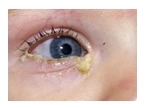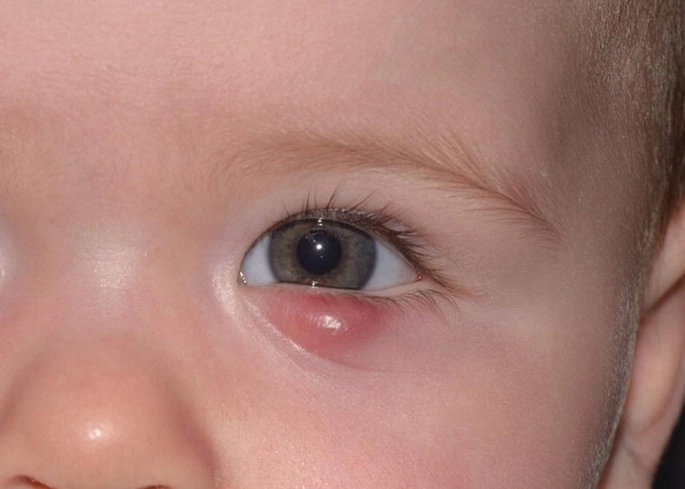Paediatric Ophthalmology in Navi Mumbai
Comprehensive Eye Care for Children & Adolescents
Your Child's Vision Matters
Children’s eyes are constantly developing, making early detection and treatment of vision problems crucial for their overall development, learning, and quality of life. Many eye conditions in children can be effectively treated when caught early, but may cause permanent vision problems if left untreated.
When Should Your Child Have an Eye Examination?
- Important: Many children cannot communicate that they have vision problems, making regular eye examinations essential for early detection.
Recommended Eye Examination Timeline:
- Birth to 6 months: Initial screening for serious eye conditions, proper eye movement, and basic visual responses.
- 6 months to 3 years: Check for proper eye alignment, development of visual skills, and early signs of refractive errors.
- 3 to 5 years Comprehensive vision testing including visual acuity, eye coordination, and detailed examination with dilating drops.
- From school age onwards, Regular check-ups every 1-2 years, or as recommended, are necessary to monitor vision changes and eye health.
- Don't wait for symptoms: If you notice any concerning signs or have a family history of eye problems, schedule an examination earlier than the recommended ages.
Common Eye Conditions in Children
Refractive Errors (Need for Glasses)
Children may not realise they can’t see clearly. Watch for: • Squinting or closing one eye • Sitting too close to the TV or books • Frequent headaches • Difficulty with schoolwork • Rubbing eyes frequently.
Amblyopia (Lazy Eye)
When one eye doesn’t develop normal vision. Signs include:

- Eyes that don't move together
- Closing or covering one eye
- Tilting the head to see better
- Poor depth perception
- Difficulty with activities requiring both eyes
Strabismus (Crossed Eyes/Squint)

Misalignment of the eyes. Look for:
- Eyes pointing in different directions
- Double vision complaints
- Closing one eye in bright light
- Turning the head to use one eye
- Eyes that don't move together
Blocked Tear Ducts
Common in newborns and infants:

- Excessive tearing
- Sticky eyelashes after sleep
- Discharge from the eye
- Recurring eye infections
- Swelling near the nose
Eye Infections (Conjunctivitis)
Pink eye and other infections require prompt care:

- Red, irritated eyes
- Yellow or green discharge
- Sensitivity to light
- Itching or burning sensation
- Swollen eyelids
Treatment Approaches
Refractive Error Correction
When children need glasses, a comprehensive examination with dilating eye drops is essential. These drops temporarily enlarge the pupil and relax the focusing muscles, allowing for accurate measurement of your child’s prescription. The effects typically last 4-24 hours, depending on the child and the strength of the drops used.
Why dilating drops are important: They provide the most accurate prescription measurement and allow thorough examination of the internal eye structures.
Amblyopia Treatment
Treatment for lazy eye typically involves:
- Corrective lenses: Glasses or contact lenses to provide the clearest possible vision in both eyes.
- Patching therapy: Covering the stronger eye to encourage use of the weaker eye, helping the brain develop better connections with that eye.
- Vision therapy: Specialised exercises to improve eye coordination and visual processing.
- Time is critical: Amblyopia treatment is most effective when started early, typically before age 7-8, when the visual system is still developing.
Strabismus Management
Treatment aims to improve eye alignment and restore binocular vision (the ability of both eyes to work together). Options include:
- Glasses: Correcting refractive errors can sometimes improve eye alignment.
- Vision therapy: Exercises to strengthen eye muscles and improve coordination.
- Prism lenses: Special lenses that help align images from both eyes.
- Surgery: When other treatments aren't sufficient, eye muscle surgery can correct alignment.
Blocked Tear Duct Treatment
Many cases resolve naturally as the child grows. Treatment may include:
- Massage: Gentle pressure over the tear sac area can help open the blockage.
- Antibiotic drops: To prevent or treat infections.
- Surgical opening: If the blockage persists beyond 6-12 months, a minor procedure may be needed.
What to Expect During Your Visit
A comprehensive pediatric eye examination is designed to be child-friendly and thorough. The examination may include:
- Visual acuity testing: Age-appropriate methods to check how well your child can see at different distances.
- Eye alignment and movement testing: Checking how well the eyes work together and move in all directions.
- Refraction: Determining if your child needs glasses, which often requires dilating drops for accurate results.
- Eye health examination: Checking the internal and external structures of the eyes for any abnormalities.
- Preparing your child: Explain that the eye doctor will examine their eyes using special lights and drops that may cause temporary blurring of their vision for a few hours. Bring sunglasses for after the visit if dilating drops are used.
Expert Care From One of the best pediatric ophthalmologist in Navi Mumbai
Dr. Anand Kumar brings extensive experience in pediatric ophthalmology, providing comprehensive eye care for children from infancy through adolescence. Our child-friendly approach ensures your child feels comfortable while receiving the highest quality eye care.
Protect Your Child's Vision
Early detection and treatment of eye problems can make a significant difference in your child’s vision and quality of life. Don’t wait – schedule a comprehensive eye examination today.
